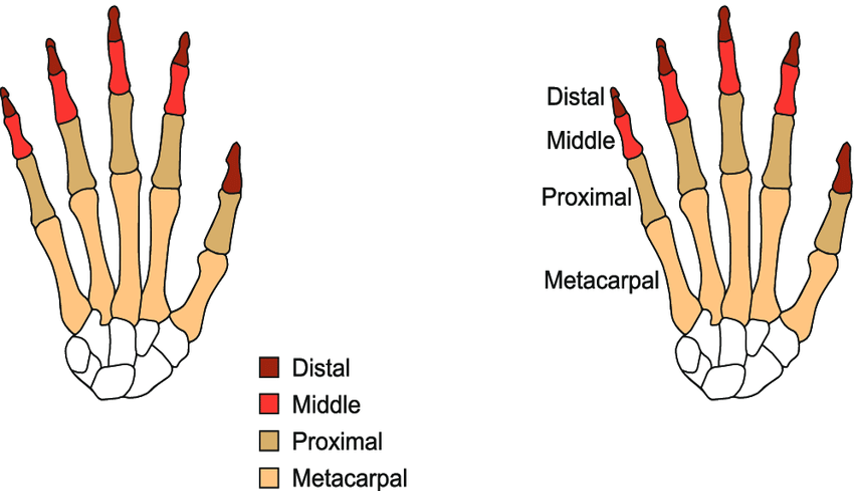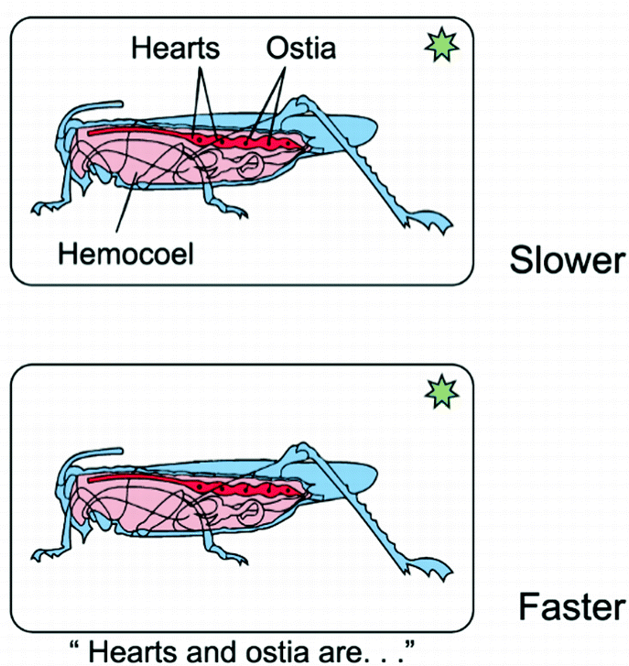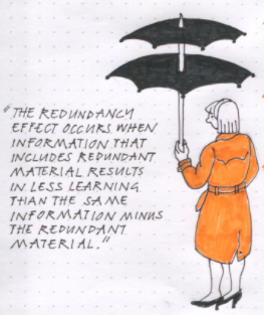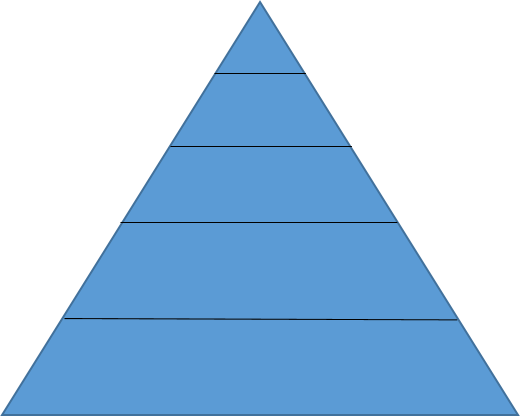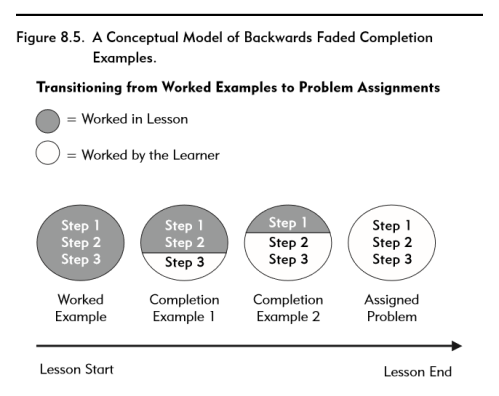Applying to an activity
There are many instructional design effects from CLT that influence how students respond to learning activities. Some effects are described below, along with techniques that can be applied to assist teaching an activity:
Split-attention effect
Split-attention effect occurs when some information is physically removed or separated from another source of information, even though both are needed for students to understand the information that is being conveyed. This is easy to do without realising so care must be taken to integrate the information.
For example, if you have text that is required to explain a diagram, integrate that text into the diagram. Don’t separate the details from the diagram so students have to look back and forth to understand.
A research experiment of students viewing the diagrams below then testing their learning demonstrated that students who viewed the image on the right outperformed the students who viewed the image on the left. As you can see, the details in the image on the right are integrated while the diagram on the left requires extra cognitive load to join the colours with the text information whilst at the same time trying to remember the terms. Overload!
Tip
If students need more than one source of information to understand a diagram, make sure you integrate the text etc. with the diagram.
Modality effect
Small short videos and screencasts with verbal descriptions and diagrams help to reduce cognitive load. If you use inputs from the eyes and ears at the same time it slightly expands our working memory and reduces cognitive load.
If you have a diagram with a verbal description provided, students will be faster at information recall and do much better, as long as both sources of information are needed to understand the information that is being conveyed.
The diagrams below show that a verbal description leads to faster information recall than by providing text.
Redundancy effect
Cognitive load is increased when the words displayed on screen are also spoken. Whenever you read the same information that is on screen, students try to synchronise your voice with the words on the screen. Students are so busy synchronising (reading and listening) that they don’t actually understand the meaning of the words.
Image from https://twitter.com/olicav/status/854393092258050048
Tip
It is better to have the diagram or video by itself with no words on screen while you are talking, instead of having the words on screen and reading the exact (or close to) words. Be careful with the words used on screen.
The same thing happens when a diagram has text that is self-explanatory. Duplicating information does not add any value as students try to understand two types of the same information presented. It impedes learning as students try to remember both information types.
The diagrams below show a pyramid with labels indicating the largest and smallest parts, and a pyramid with no text. It is better to present the diagram with no text to reduce the cognitive load as the students can see and understand the smallest and largest parts.
Worked examples effect
Studying multiple worked examples is more effective than problem solving for novice learners.
The image below explains how novice learners require more worked examples and scaffolding support when compared to an expert learner who would be able to problem solve.
Image from https://twitter.com/KateJones_teach/status/1257323013172686849/
One worked example is not enough for novice learners to be able to problem solve, they need scaffolding support – more worked examples.
Third year students, however, who are closer to expert learners are better suited to problem solving (and case studies) as they will already have the background schemas to understand how things work to be able to problem solve.
Faded worked examples effect
This is where a 'fade' is used on worked examples and is a transition to being able to problem solve.
In the diagram below, the worked example is shown first. Then the student completes each example activity with fewer steps shown each time – the student does more steps/work time.
For example, the second circle shows how the student is shown the first two steps then asked to complete the third step. Finally the student is given the entire problem to solve, and they know how to do it, after multiple times.
Experiential studies have demonstrated that students who have been given three worked examples then asked to problem solve, outperform students who were given one worked example to then problem solve.
